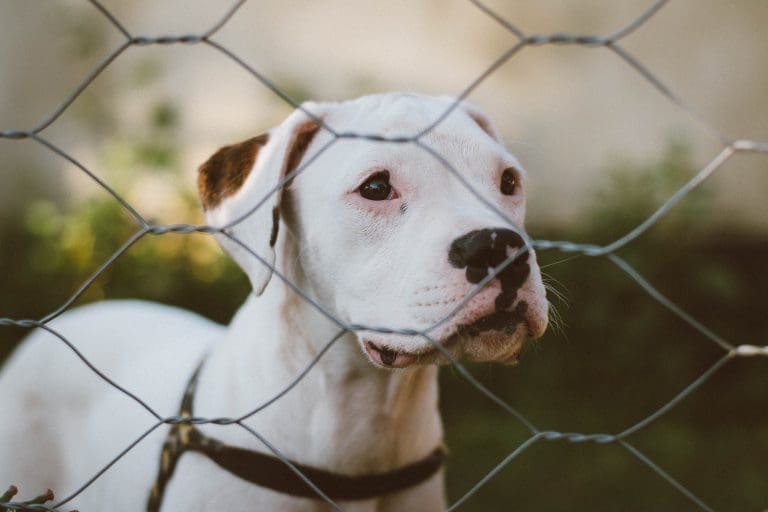How Often To Express Dog Glands?
Post Date:
December 10, 2024
(Date Last Modified: November 13, 2025)
Anal gland care is a common aspect of canine hygiene and veterinary medicine, involving anatomy, signs of dysfunction, and options for management.
Anal gland anatomy and function
Anal sacs are paired structures located beneath the skin at the lateral margins of the anus and communicate with the outside via small ducts at the 4 and 8 o’clock positions on the perianal ring[1].
The sacs contain sebaceous and apocrine secretory cells that produce a dark, oily secretion used in scent marking and individual identification in social and territorial behaviors[1].
Normal emptying typically occurs passively when the rectal ampulla is compressed during defecation, so stool consistency and defecation frequency directly influence how often sacs are evacuated naturally[1].
Breed, conformation, and age affect anal sac function; brachycephalic and many small-breed dogs have relatively higher rates of chronic problems due to duct anatomy and fecal characteristics[1].
Signs that glands need expression
Owners commonly notice scooting, persistent licking of the perineum, a strong fishy or malodorous smell, or a visible swelling adjacent to the anus as indicators that the sacs merit attention[2].
Pain on palpation, reluctance to sit or defecate, and vocalizing during handling of the rear end are clinical signs that the sacs may be impacted or inflamed and require professional evaluation[2].
Discharge that is thick, yellow to green, or tinged with blood suggests infection or abscess formation and is not the same as the brief, mild odor some dogs have immediately after defecation[2].
How often glands normally empty
Most healthy dogs empty their anal sacs spontaneously with defecation, so many do not require manual expression at any set interval[3].
Stool consistency is a primary determinant: firm, well-formed stools compress sacs effectively while soft or diarrheic stools reduce passive evacuation and increase the likelihood of retention[3].
Reported practical ranges for dogs that do need occasional assistance vary widely; owners or clinicians may express sacs opportunistically every 2 to 12 weeks depending on individual tendency and clinical signs[3].
Age and activity matter: older dogs and those with sedentary lifestyles may show slower gut transit and higher retention risk, while dietary fiber and exercise that firm stool can reduce expression frequency[3].
Evidence-based frequency guidelines
Two general approaches are used: symptom-driven expression when clinical signs appear, or routine calendar-based expression for dogs with known recurrent problems; symptom-driven care minimizes unnecessary handling[3].
For practical planning, clinicians commonly stratify by risk and symptom burden and then individualize intervals rather than using a one-size-fits-all schedule[3].
| Risk level | Examples | Suggested interval |
|---|---|---|
| Low risk | Healthy adult with firm stools | As-needed; many never require expression[3] |
| Moderate risk | Occasional odor or mild retention history | Every 8–12 weeks as a starting point, then adjust[3] |
| High risk | Small breeds, chronic impaction history | Every 2–4 weeks until control achieved, then extend interval[3] |
| Post-treatment | After abscess drainage or surgery | Short interval checks—weekly to biweekly—until healing is confirmed[4] |
When to seek veterinary assessment
Persistent or recurrent impaction, defined clinically as multiple symptomatic episodes over several months despite home measures, merits veterinary evaluation for underlying causes such as duct stenosis or anal sac neoplasia[4].
The appearance of purulent (pus) discharge, frank blood, severe pain, fever, or a palpable fluctuating mass consistent with an abscess requires prompt professional care and often drainage plus systemic therapy[4].
Failed home management, worsening signs after attempted expression, or systemic illness such as lethargy and anorexia accompanying perianal disease are clear reasons to stop home care and pursue veterinary diagnostics[4].
Manual expression: safe technique and who should perform it
Veterinarians and trained veterinary technicians should perform expressions for inflamed, painful, or previously complicated sacs; experienced, instructed owners may perform expression for stable, noninfected cases under veterinary guidance[3].
Recommended technique highlights include using gloves, lubricating the duct opening, supporting the dog in a secure standing or lateral position, and applying firm, gentle pressure inward and upward toward the rectum to encourage release into absorbent material rather than forceful squeezing that risks rupture[3].
If expression produces blood, thick purulent material, or severe pain, the procedure should be stopped and the animal referred for veterinary assessment and likely medical therapy[3].
Supplies, hygiene, and safety precautions
- Disposable exam gloves and a lubricant such as water-based gel to protect skin and minimize trauma; change gloves between animals[5].
- Absorbent pads or paper towels, a sealed container or disposable bag for contaminated waste, and disinfectant for surfaces after the procedure[5].
- Personal protective measures including eye protection if splatter is possible, and strict hand hygiene before and after glove removal to prevent cross-contamination[5].
Risks, complications, and immediate management
Complications include duct rupture, escalation to abscess formation, and secondary bacterial infection; rupture or worsening swelling after home expression should prompt immediate veterinary reassessment[4].
When infection is suspected, clinicians often collect a sample for cytology or culture and consider starting systemic antibiotics guided by likely pathogens and local resistance patterns; analgesics are indicated for pain control[4].
Surgical options, including anal sacculectomy, are reserved for recurrent, refractory disease or neoplasia and carry procedure-specific risks that are discussed during veterinary consultation[4].
Prevention and long-term management strategies
Dietary modification to increase soluble and insoluble fiber can help firm stool and reduce the need for manual expression; typical fiber interventions are tailored by the veterinarian and dietitian to the individual dog[2].
Weight management and regular activity that promote normal gastrointestinal transit reduce retention risk, and scheduled veterinary checks help detect early changes before abscessation or chronic damage occurs[2].
Topical therapies, improved grooming to keep the perineal area clean, and addressing other underlying diseases such as parasitism or inflammatory bowel disease are part of a comprehensive recurrence-reduction plan[2].
Owner monitoring and follow-up schedule
For dogs with intermittent signs, set a pragmatic monitoring window and document episodes so you and your veterinarian can detect patterns; consider a written log of date, symptom, stool quality, and any treatment applied[3].
If a dog has two or more symptomatic impaction or infection episodes within a 6-month period, referral for diagnostic workup is commonly recommended to evaluate for structural or systemic contributors[4].
After therapeutic abscess drainage, clinicians typically recheck the wound and perianal region weekly for 2 to 4 weeks to confirm resolution and to decide on ongoing medical or surgical plans[4].
When owners perform home expressions under veterinary instruction, an initial conservative interval is often every 2 to 4 weeks while monitoring response and any procedural adverse effects[3].
Dietary and lifestyle numeric targets to reduce recurrence
Increasing dietary fiber is a standard noninvasive measure; many clinicians suggest starting with a soluble/insoluble fiber addition in the range of roughly 1 to 3 teaspoons per 10 lb (4.5 kg) of body weight per day and titrating to effect on stool firmness and tolerance[3].
Aim for consistently formed stools (commonly described as a 2–3 on a 5-point stool scale) as a practical target that correlates with adequate passive anal sac emptying for most dogs[3].
Weight-loss goals for overweight dogs often start with modest targets such as a 5% to 10% reduction in body weight over a defined period, because even moderate weight loss can improve mobility and gut transit time and reduce anal sac problems[2].
Medical treatment parameters and when to escalate
When infection is present, systemic antibiotic courses are commonly prescribed for 7 to 14 days, with the choice and duration tailored to culture results, clinical response, and local antimicrobial stewardship recommendations[4].
Topical therapies (antiseptic or anti-inflammatory preparations) may be used adjunctively; clinicians often reassess within 7 days of initiating topical therapy to determine whether escalation is necessary[5].
If signs fail to improve within 48 to 72 hours of appropriate medical therapy or if the lesion enlarges or becomes more painful, prompt re-evaluation is advised because early surgical intervention can prevent progression to larger abscesses[4].
Owner education: safe limits and red flags
Advise owners to limit home manual expression attempts to avoid tissue trauma and to stop immediately if they observe blood, thick green/yellow pus, or if the dog exhibits marked pain—these are red flags that require veterinary care[3].
Teach owners to check the perineal area daily when a dog has a history of anal sac disease and to seek veterinary attention if swelling is noted that increases in size over 24 to 48 hours or if systemic signs such as fever, lethargy, or loss of appetite appear[4].
For dogs returning to normal after a treated episode, a practical follow-up schedule is to return for a clinical recheck at roughly 2 weeks and then again at 6–12 weeks to confirm sustained resolution and to review preventive measures[5].
Long-term planning and when surgery becomes appropriate
Surgical referral for anal sacculectomy is generally considered after recurrent, refractory disease that fails optimized medical and conservative measures, with many surgeons considering referral after multiple recurrences despite 3 to 6 months of tailored prevention[4].
Preoperative stabilization commonly includes 7 to 14 days of appropriate antimicrobial and anti-inflammatory therapy when infection or inflammation is active, and re-evaluation immediately prior to surgery to ensure the tissue is controlled and risks are minimized[4].
Clear communication with the veterinarian about frequency, response to measures, and any worsening signs is the single most practical way to avoid unnecessary procedures while ensuring timely treatment for infections or complications[3].






